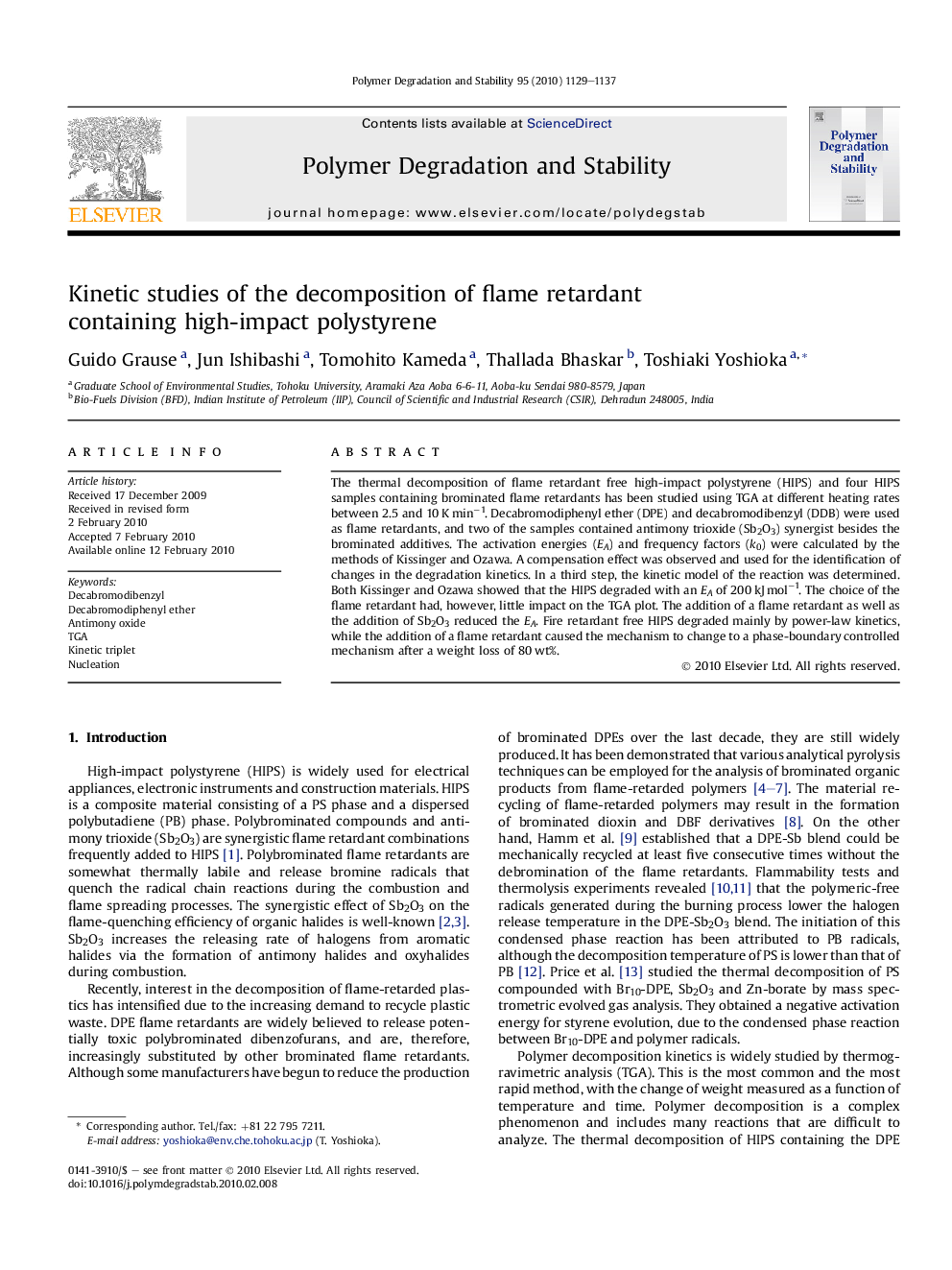| Article ID | Journal | Published Year | Pages | File Type |
|---|---|---|---|---|
| 5203866 | Polymer Degradation and Stability | 2010 | 9 Pages |
Abstract
The thermal decomposition of flame retardant free high-impact polystyrene (HIPS) and four HIPS samples containing brominated flame retardants has been studied using TGA at different heating rates between 2.5 and 10Â KÂ minâ1. Decabromodiphenyl ether (DPE) and decabromodibenzyl (DDB) were used as flame retardants, and two of the samples contained antimony trioxide (Sb2O3) synergist besides the brominated additives. The activation energies (EA) and frequency factors (k0) were calculated by the methods of Kissinger and Ozawa. A compensation effect was observed and used for the identification of changes in the degradation kinetics. In a third step, the kinetic model of the reaction was determined. Both Kissinger and Ozawa showed that the HIPS degraded with an EA of 200Â kJÂ molâ1. The choice of the flame retardant had, however, little impact on the TGA plot. The addition of a flame retardant as well as the addition of Sb2O3 reduced the EA. Fire retardant free HIPS degraded mainly by power-law kinetics, while the addition of a flame retardant caused the mechanism to change to a phase-boundary controlled mechanism after a weight loss of 80Â wt%.
Related Topics
Physical Sciences and Engineering
Chemistry
Organic Chemistry
Authors
Guido Grause, Jun Ishibashi, Tomohito Kameda, Thallada Bhaskar, Toshiaki Yoshioka,
